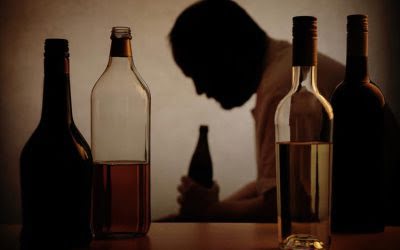By arming them with the skills to provide positive support, this program strengthens family bonds and builds a united community for the well-being of their loved one. Now that you’re no longer drinking, you have a chance to embrace your sober life and redefine your passions. Now is the time to pursue those things you’ve always wanted to learn. There are also a few steps you can take on your own to start enjoying your new sober life as you work toward lasting recovery.

What Does It Mean To Have a Substance Abuse Problem?
In contrast, acute withdrawal syndrome is marked by intense craving and physical side effects such as tremor, nausea, and flu-like signs. PAWS symptoms can last for a few days for each, and patients can suffer from it for a year after quitting alcohol. Holistic approaches incorporating nutrition, exercise, spiritual practices, and mental health management create sustainable recovery foundations. Incorporating regular physical activity not only improves physical health but also releases endorphins, which can enhance mood and support emotional well-being.
Healthy Eating Habits
As the term referred to people who were sober but not receiving treatment for their AUD, it implied that a person was not fully committed to sobriety. Due to the implication that someone is not trying hard enough to recover, the term has negative connotations, and AA now discourages its use. Dry drunk syndrome is a term that AA developed to describe a person who no longer drinks alcohol but experiences the same issues or acts in the same way as when they were drinking. A person with AUD is unable to stop drinking alcohol, despite the effects it has on their life. Crystal Raypole has previously worked as a writer and editor for GoodTherapy.
- For example, individuals may resort to unhealthy distractions, like excessive screen time or substance use, to escape their feelings instead of addressing the root causes.
- Symptoms of dry drunk syndrome can be frustrating and demotivating, but here are four helpful ways to manage them.
- 1 This term is considered to be stigmatizing, and it is no longer in use in the substance abuse field.
- Our residential and intensive outpatient programs give you the options to take different paths that all lead to a safe and healthy recovery.
- John C. Umhau, MD, MPH, CPE is board-certified in addiction medicine and preventative medicine.
What You Need To Know About Dry Drunk Syndrome
- Generally, someone with dry drunk syndrome will have stopped drinking alcohol.
- Recovery requires dismantling and rebuilding the psychological architecture that supported addiction in the first place.
No, dry drunk isn’t curable, but it can be managed with support and willingness, just like addiction. Dry drunk syndrome typically occurs within the first year of sobriety, although it may not always emerge immediately, and symptoms can begin to emerge later as abstinence continues. PAWS is a series of psychological and mood-related symptoms that can occur after a person stops taking a substance. Alcohol addiction is a disease, but that doesn’t excuse abusive behavior. If your loved one behaves in toxic or aggressive ways, it’s best to talk this over with a therapist and develop a plan to keep yourself safe. All of this can be frustrating if you have a loved one in recovery.
Dry drunk syndrome goes deeper than simple irritability or restlessness. It reflects a lack of internal change after stopping alcohol abuse—where the person avoids drinking but hasn’t addressed the underlying issues that fueled it in the first place. They may still act out in anger, isolate, obsess, or engage in negative behaviors, even though they’ve been abstinent for months or even years. Despite their sobriety, a dry drunk typically continues to behave in destructive ways. In essence, they have stopped drinking but have not fully embraced recovery. The definition of dry drunk doesn’t necessarily imply relapse, but it suggests a lack of personal growth and mental or emotional recovery.
This phenomenon is known as dry drunk syndrome – a state where someone dry drunk syndrome maintains physical sobriety but struggles to achieve emotional and psychological well-being. Dry drunk syndrome can create obstacles on the path to lasting recovery and potentially lead to relapse if left unaddressed. Lastly, addressing dry drunk syndrome requires a combination of physical, emotional, and behavioral therapies to address the causes of addiction and cultivate healthy habits and coping mechanisms. Comprehensive addiction recovery programs may include individual therapy, therapy, medication-assisted treatment, and 12-step programs. If you or a loved one is experiencing dry drunk syndrome, it does not mean there is a relapse about to occur. A relapse is when someone has stopped drinking and starts drinking again.

Co-Occurring Mental Health Disorders
It’s also common to see replacement addictions—trading alcoholism for compulsive spending, overeating, or binge-watching for hours. These patterns reveal that the psychological aspects of addiction remain unresolved. In some cases, post acute withdrawal syndrome (PAWS) may be involved, where mood instability, anxiety, and sleep issues continue even after the physical withdrawal ends.
Remember that relapses are a typical and natural part of the healing process. Untreated dry drunk syndrome can lead to a range of negative consequences, including emotional instability, relationship difficulties, increased risk of relapse, and challenges in maintaining sobriety. Individuals may also experience persistent cravings, unresolved psychological issues, and difficulty adjusting to a sober lifestyle, hindering their overall well-being and recovery progress. Someone can be sober, meaning they aren’t using drugs or alcohol, but they might not have fully dealt with the underlying contributors to the original alcohol use disorder. Recovery, by contrast, is a process of drug addiction treatment physical and emotional healing from the disease of addiction.

They may also be able to prescribe medications, such as acamprosate (Campral), to help with the symptoms. There is little scientific evidence for the existence of dry drunk syndrome. However, some people consider it to be part of post-acute withdrawal syndrome (PAWS).
Early Intervention and Comprehensive Rehabilitation
The FHE Health team is committed to providing accurate information that adheres to the highest standards of writing. This is part of our ongoing commitment to ensure FHE Health is trusted as a leader in mental health and addiction care. As chief Clinical Officer at FHE Health, a nationally recognized behavioral health treatment provider, he ensures quality, innovation, and comprehensive treatment for patients. Also, maintain a positive outlook in the hope that addiction treatment professionals can help them forge a solid commitment to recovery. Everyone has goals, but addiction can completely push these goals aside.
